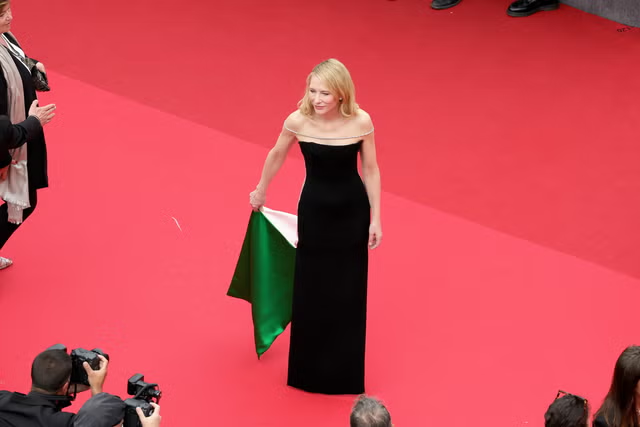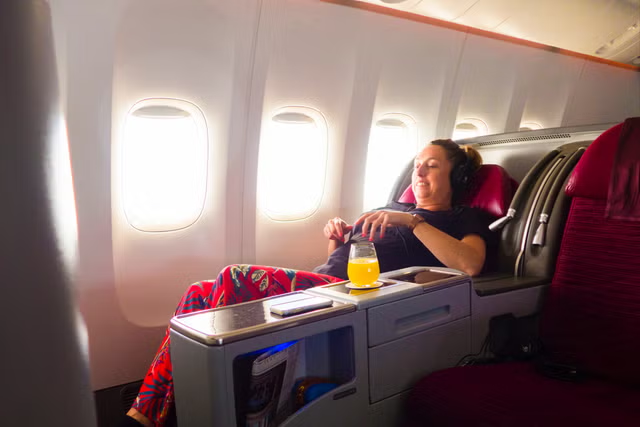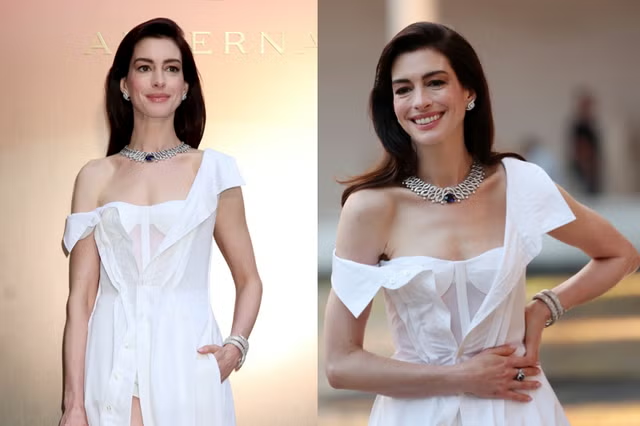This time last week I was sitting in a conference room - a posh conference room, mind you - in the fanciest hotel along the French Riviera, for a seminar on skincare. But besides that, one thing I couldn’t help but marvel at was how incredibly well put together all of the older French women were. One woman in her 50s - dressed nonchalantly in a crisp white shirt tucked into the simplest black trousers and a slim kitten heel - had a grey streak in her brunette bob that looked so chic it could have been artfully placed by a master coiffeur. Of course, it hadn’t - it just grew like that. Another chic woman in her 60s appeared to not have a scratch of make-up on except for a slick of creamy red lipstick and brushed up eyebrows. It was a look that probably took no more than a couple of minutes to perfect.
The following day in bustling Cannes, there were even more glamorous older French women, and by the time I was back in London, the likes of Carla Bruni, Philippine Leroy-Beaulieu and Isabelle Huppert had graced the film festival’s red carpet looking easily more glamorous than women 30 years their junior. So what is the magic formula to French beauty? That je ne sais quoi that implies they care about what they look like but at the same time are not remotely bothered at all.

It starts with attitude
A glamorous 68-year-old French woman herself, the make-up artist Terry De Gunzburg certainly knows a thing or two about mastering effortless French beauty. It starts with a relaxed attitude towards beauty and appearance. “We are concerned by our looks but not as much as Americans, for instance,” De Gunzburg explains. “It’s style before statement for French women. We want to keep our appearance looking nice but it’s also not the most important thing. We can be a little bit obnoxious but we do what we have to do without being fake.”
De Gunzburg goes on family holidays with 71-year-old actress Isabelle Huppert, as well as having done her make-up as a young actress, and cites Huppert as the perfect expression of French beauty. “You might be doing little touches of things here and there but it’s the inner beauty, personality and a good smile that is much more important,” she points out.
It’s something the leading French make-up artist Violette Serrat - who has more than half a million followers on Instagram - agrees with. “In France we take care of what mother nature gave us and we are not chasing an ideal of youth, because we’ll never be happy,” she says. With her own brand Violette FR, and as the creative director of the heritage French beauty brand Guerlain, Serrat is a leading authority on what she calls “French woman beauty”.
She says: “We have a mentality of self-acceptance and we don’t use beauty to change how we look, but instead as a tool of expression.”

‘Touches’ of make-up
“We work in little touches of make-up rather than a full look,” explains Serrat. While there has been a huge trend in multiple make-up steps to chisel, contour and shape the face using a whole host of beauty products, Serrat explains that in France, it’s much more common to just have a few touches of make-up when you feel like it, rather than being committed to a full “look” on a daily basis.
And all applied with fingers, instead of brushes, without a second thought. “We are generally more minimalist with our make-up and want a little touch of eyeshadow, concealer and lipstick,” says Serrat. “Everyone says French women look effortless, but the truth is to look effortless, you have to be effortless.”
Indeed, this would explain the carefree attitude to beauty I saw in France last week. The Bisou Balms by Violette FR, £29 each, are beautiful: a sheer matt wash of colour that is so easy to use, you don’t even need a mirror. (The brand’s coral shade Guimauve is the first lipstick I’ve finished down to the end in years.)
But of course, it’s hard to overlook that skin over 50 often needs a different treatment with make-up than that of a young 20-something with already great skin, no wrinkles or dark circles. “Over the age of 50 we still do need make-up and it’s important, but we need to use it in a more clever way,” explains De Gunzburg, who favours colour-correcting skin care creams (“CC” creams) over heavy foundations.
“The ‘healthy’ look is more important than the ‘perfect’ look, so French women often use make-up for optical correction such as a dab of concealer where you need it rather than a full face of coverage. The French attitude is to wear make-up but to also pretend you’re not wearing it at all.” Try the Brightening CC Foundation, £62, by By Terry or the True Match Nude Plumping Tinted Serum, £14.99, by L’Oréal Paris. Add a touch of vibrant blush, et voila.

A simple skincare routine
The culture towards skincare in France has always been very different to that in the likes of the UK or America, where you would perhaps buy your beauty products from a big department store from one brand. In France it is much more customary to buy skincare from the pharmacy, a cherry-picked selection advised by pharmacists. “From a young age we are taught to avoid the sun and protect the skin from sun damage,” explains De Gunzburg, who says Huppert is “obsessed” with suncare.
“We don’t have long skincare routines, it’s just about using the right formulas but less product.” In Gunzburg’s own By Terry range, which she says she formulates first and foremost for herself, a good skincare routine comprises a hydrating serum, a cream, a good eye cream and, in the day, a high factor sun protection. This back–to-basics approach to skincare is, what she describes, “the French way”.
The skincare brand La Roche-Posay has a best-selling SPF range for good reason: the textures are lightweight and packed with hydration. The Anthelios Age Correct SPF 50+, £26, by La Roche-Posay is a brilliant option for a daily skin cream with effective sun protection. If you’d rather a separate day cream, the Lait-Crème Concentré Nourishing Moisturiser, £13.65, by Embryolisse, is a cult French pharmacy classic.

A softer hand with injectables
It doesn’t matter where you are in the world, it’s hard to avoid the allure of injectables and in-clinic treatments. And while De Gunzburg agrees certain injectables, such as Botox, can refresh the face, “in Paris the trend now is doing little tweaks without changing the shape of your face,” she says. De Gunzburg herself has mesotherapy (a cocktail of vitamins injected into the skin) once a year to improve the quality of the skin. Day to day, she does “face yoga” - which you can find in various online tutorials.
Body wellness
The Paris-based massage therapist Luca Bagnara is in hot demand in Paris for his sculpting lymphatic drainage massages, which have always been a popular treatment across the Channel. “In France, facialists and body massagers have long been part of women’s lifestyle and that ritual is often passed down from their mothers,” he explains. “For many French women, taking care of yourself is a habit and a way of life.” So popular are Bagnara’s treatments that he now has a weekly residency at Claridge’s Hotel in London.
A sensual attitude
One of the most talked about storylines of the show Emily in Paris is how Philippine Leroy-Beaulieu, 61, who plays marketing chief Sylvie Grateau, is portrayed. “She plays a woman who is not trying to be 20 years younger. She has a sexuality and this is France, this is everywhere,” explains Serrat. “It’s nice to see because usually at a certain age women are just portrayed as grandmothers. In France we don’t need to suddenly retire from using fashion and beauty or hide in a closet about our age.”
In France, youth is, explains Serrat, “not a goal to protect at all times”. As De Gunzburg sums up, “to balance some of the wrinkles and sagging as we age we have a sense of humour and intelligence”.
Disclaimer: The copyright of this article belongs to the original author. Reposting this article is solely for the purpose of information dissemination and does not constitute any investment advice. If there is any infringement, please contact us immediately. We will make corrections or deletions as necessary. Thank you.



